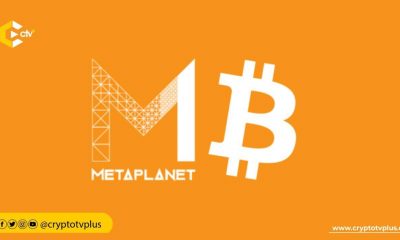Education
Exploring Low-Fee Alternatives for Bitcoin Hodlers: L-BTC vs. WBTC

Bitcoin hodlers around the world are seeking alternative solutions to combat the increasing transaction fees associated with Bitcoin’s timechain. While the Lightning Network provides low transaction fees, concerns regarding custodial wallets and the need for self-custody have led many to explore other options.
In this article, we will’ll delve into the bone of contention between Liquid-Bitcoin (L-BTC) on Blockstream’s Liquid sidechain and wrapped bitcoin (WBTC) on the Ethereum network, highlighting their pros, cons, and potential risks.
Understanding the Challenge
Bitcoin hodlers who follow a dollar-cost averaging (DCA) stacking strategy often face difficulties when withdrawing small amounts from exchanges to the Bitcoin timechain. This practice results in numerous and small unspent transaction outputs (UTXOs), leading to complex coin control management and higher fees for larger transactions.
To address this issue, alternative low-fee options have emerged, including L-BTC and WBTC.
Liquid-Bitcoin (L-BTC) on Blockstream’s Liquid Sidechain
L-BTC operates on the Liquid sidechain, a separate blockchain built on top of the Bitcoin network. It employs a federated consensus model, where a group of trusted functionaries validates transactions on the Liquid network. L-BTC facilitates inter-blockchain transactions with other assets on the Liquid sidechain, offering enhanced privacy features and confidential transactions.
The pros of L-BTC include:
- faster transaction confirmations due to shorter block times,
- improved privacy features,
- compatibility with other assets on the Liquid sidechain, and
- the ability to leverage Bitcoin’s liquidity in cross-chain transactions.
Participants in the network can run their own node to verify proof-of-reserves and peg their bitcoin into Liquid without relying on a federated third party. Notably, Liquid does not require users to undergo KYC/AML procedures to obtain L-BTC.
However, there are cons associated with L-BTC, including:
- reliance on a federated consensus model,
- limited availability of decentralized applications compared to Ethereum, and
- the need to trust the functionaries.
Additionally, a federated third-party member must peg out from Liquid to the main Bitcoin chain.
Wrapped Bitcoin (WBTC) on Ethereum
WBTC is an ERC-20 token on the Ethereum blockchain that utilizes Ethereum’s smart contract functionality to lock up Bitcoin and issue WBTC tokens. Its governance involves multiple entities forming a decentralized autonomous organization (DAO), along with merchants providing liquidity, a single custodian (BitGo) holding bitcoin reserves, and token holders participating in voting.
The advantages of WBTC include:
- integration with the extensive Ethereum ecosystem
- enabling seamless interoperability with Ethereum-based decentralized applications (dApps) and smart contracts
- faster transaction transfers and cheaper fees compared to Bitcoin’s main chain
- ability to leverage Bitcoin’s liquidity within the Ethereum network
However, there are cons associated with WBTC, such as:
- slower transaction confirmations and higher fees during network congestion on the Ethereum network.
- WBTC relies on a single custodial entity for holding Bitcoin reserves, introducing a central point of failure.
- WBTC has some limited use for those utilizing the Tron protocol.
In contrast to L-BTC, WBTC carries less specific counterparty risk, and users cannot run their own nodes. Furthermore, WBTC merchants are required to perform KYC/AML procedures to verify users’ identities.
But generally, L-BTC and WBTC enhance liquidity, scaling, and functionality, benefiting the overall ecosystem. Both tokens offer alternatives for Bitcoin hodlers to access advantages offered by other blockchain networks, including faster transaction confirmations, interoperability with dApps, and additional financial instruments.
Risks and Implications
Both L-BTC and WBTC rely on trusted intermediaries and custodians for their operations, which pose risks to users’ funds and the stability of these systems. While there have been no major reported failures, it is important to be cautious and perform due diligence when engaging with L-BTC or WBTC.
L-BTC requires collusion by 11 out of the 15 Liquid Federation functionaries to rug-pull users, reducing the possibility of acting in bad faith. On the other hand, WBTC’s governance and potential failure points are less defined.
L-BTC’s Superiority over WBTC
Considering their distinct advantages, L-BTC emerges as a superior option compared to WBTC. L-BTC provides lower transaction fees and faster transfer times, while WBTC relies on the Ethereum network, which experiences congestion issues and high fees.
Leveraging the Liquid Network, L-BTC offers cost-effective transactions, quicker confirmations, and improved scalability. It becomes a more efficient and practical solution for Bitcoin holders, bypassing limitations and challenges associated with WBTC on Ethereum.
Utilising L-BTC for Low Fees
To make the most of L-BTC’s low fees, a three-step process is recommended.
- First, withdraw from an exchange directly to a wallet supporting L-BTC, bypassing additional conversions or transfers.
- Second, accumulate a sufficient amount of satoshis to create a desirable UTXO denomination, optimizing coin control and simplifying future transactions.
- Finally, peg out using services like SideSwap to convert L-BTC to BTC, considering the conversion fee.
Currently, popular Bitcoin exchanges do not support L-BTC withdrawals. However, as with Lightning withdrawals, exchanges will likely respond to the demand for L-BTC.
Conclusion
For Bitcoin hodlers seeking low-fee alternatives while maintaining a connection to the Bitcoin network, L-BTC stands as a compelling choice over WBTC. L-BTC’s utilization of Bitcoin itself aligns closely with Bitcoin’s principles and vision. While both L-BTC and WBTC have advantages and risks, please exercise caution and perform due diligence when engaging with these tokenized versions of Bitcoin.
























